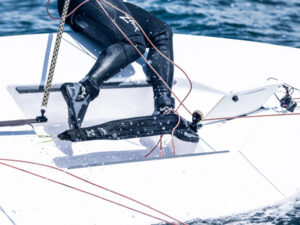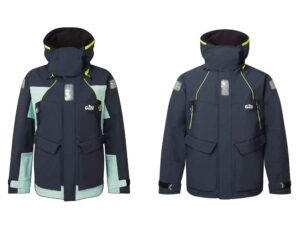
GUExpeditionSt
As I mentioned in a recent story, I’ve recently been spending some quality time afloat using the tactical software program Expedition. Last week I sailed Block Island Race Week aboard a Swan 45 loaded with Ockam instruments, Expedition software and a fresh set of polars courtesy of Jim Teeters at US SAILING. I’ve spent more time using Expedition on offshore races than inshore, but after five solid days of windward/leewards, with a petite distance race thrown in, I finally feel as though I’ve turned a corner with the system.
At this point, I also feel that I can lay out some of the program’s basics, share a few tips, and throw around some praise for what I feel is a terrific program, once you’ve dedicated the time to learn how to use it.In order for Expedition to work to its full potential, you’ll first need to check off a few boxes. Most importantly, you must have some type of wind instrument package aboard that can send NMEA data to Expedition via a laptop or desktop Windows PC. If you’re buying a new computer for boat use, make sure it’s loaded with Windows XP rather than Vista, as few navigation and software programs work with Vista.
To allow the navigator or tactician to be on deck, you’ll also need a wireless transmitter with a remote touchscreen display, preferably something that can take a few jolts and not die when hit by salt spray or rain. Many boats use Panasonic Toughbooks.Expedition is compatible with onboard instruments by Racing Bravo, Ockam, Nexus, Tacktick, NKE, and B&G. The most important data for running Expedition is true/apparent wind speed, true/apparent wind direction, lat/long, speed over ground, speed through the water, and position.
Expedition software can also receive and show AIS information, vector and/or raster charts, depth, and weather and current grib files.While Expedition does come loaded with basic polars for popular classes such as the Farr 40, you’ll probably need to obtain accurate, up-to-date polars for your boat from the manufacturer, designer, or US SAILING. The polars are key to assessing boat performance, laylines, and time calculations, so it’s imperative that they’re accurate and up-to-date. On the water before the race, setting up a windward/leeward course requires a few steps, starting with determining the exact location of the starting line by “pinging” the starboard and port ends.
Once you’re set up in Expedition, you press an icon that represents the starboard end of the line. This will bring up a small window with two boxes, one of which says: “Set starboard end of line?” As you slowly approach the committee boat’s starboard side, your bowman should be at the bow as if he were calling the line at the start, and when the bow reaches the start, he or she should drop their hand or shout: “mark!” You then repeat the process for the pin end. When the committee tells you what type of windward/leeward course they’ve decided on, you tap the windward/leeward icon, which will bring up a window in which you enter the range and bearing to the weather mark and the distance above the line that the leeward mark will be located. Keep in mind that even with the best race committees, these figures are approximate.
Next comes the starting time, which needs to be accurately entered into Expedition. If you miss the 10-minute gun, you can easily reset for 9, 5, 4, or even 1 minute. Expedition will then give you time to the line, time to both pin and boat ends, and even time to burn. If time to burn is in the red, you’re heading towards an OCS call; if you’re going to be late, that time is shown in green. Thanks to your accurate pings, an Expedition user should be every bit as accurate, if not more so, than the bowman.
Once the race begins, switch to layline mode, which removes all extraneous information (like chart data) and shows graphic representations of the laylines. You can also bring up a “What if?” window which will show which tack is favored by showing time and distance to both port and starboard laylines. To increase your tactical options, you can also plug in data that you think might be coming soon, such as a change in wind direction, or what you see is happening, such as current set and drift.
As you round the weather mark the first time, ping the mark to make sure it’s in the same place as the committee said it was. If not, insert the correct mark position into your windward/leeward course. The same goes for the leeward mark. The entire time you’re sailing up- or downwind, you’ll be able to call laylines, alert the back of the boat to wind trends, and let the front of the boat know how much time they have to set up for maneuvers.Once the start timer has counted down to zero, it then begins measuring elapsed time, which helps a lot if you’re handicap racing, especially under IRC, which is calculated as time-on-time.
If you get accurate finishing times for your competitors, you should be able to calculate how you did before you get ashore.We’ve covered more ground in this story than we usually do in our “Gear Up” stories, but complex software like Expedition demands more explanation than other products. We won’t go into how Expedition works for offshore racing, but take our word for it-the software works every bit as well offshore as it does inshore. The one drawback with Expedition: you won’t really get the hang of it until you take it racing. Messing around with it at home or on the boat will give you some familiarity, but until real-time data is received, marks are set, and the gun goes off, you won’t be able to get the practice you need. For more information on Expedition, go to









